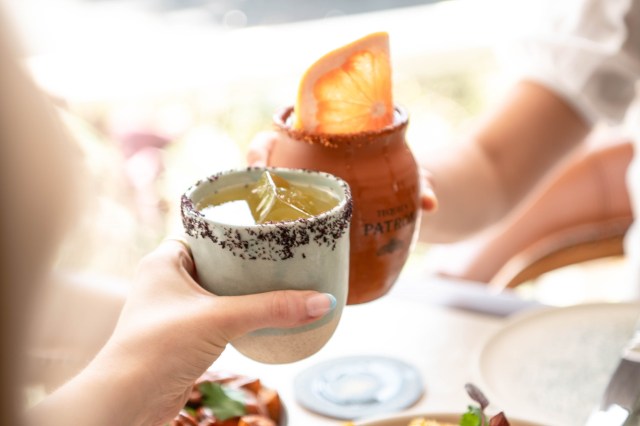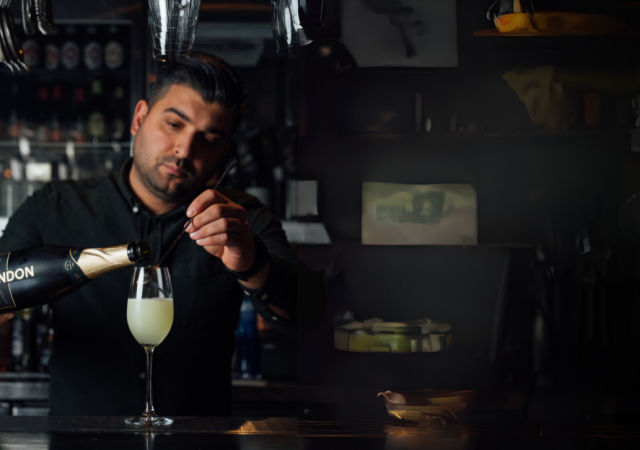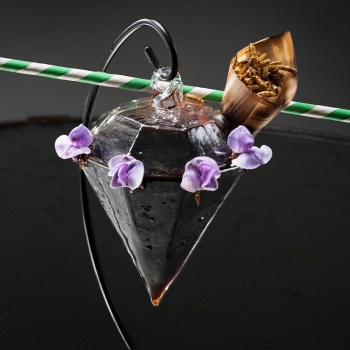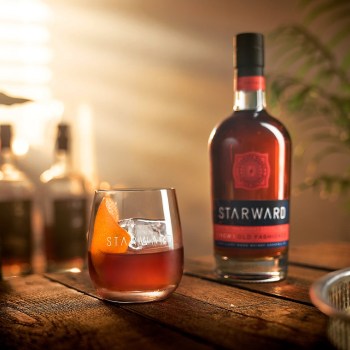In 2023 and beyond, Australia is staying at the forefront of cutting-edge cocktail trends by embracing innovative new techniques and native flavours and ingredients. As bartenders continue to push the boundaries of mixology, and customers hunt down unique and memorable experiences, an exciting journey lies ahead for the future of Australia’s cocktail scene.
Bars and Clubs sat down for a chat with Ali Toghani, Pacific Concepts Beverage Director, to dive into the cocktail trends dominating in 2023, and the direction he envisions Australia’s cocktail trends to go in 2024.
“2023 saw the return of the Martini, a tequila boom and the agave revolution, as well as a big focus on no- and low-alcohol drinking,” says Ali.
“In terms of techniques used by bartenders, milk punches, clarification, freeze infusions, fermentations, redistilling and switching were the techniques that dominated cocktail bars. We also saw a large shift to the use of premium ice and emphasis on the right level of dilutions becoming more prominent in the cocktail world.
“Also of note, was a welcome surge of aromatised wines in cocktails, which brings new savoury and sometimes sweet notes to cocktails.”
As described by Ali, cocktail making has evolved beyond traditional mixing with the adoption of a new wave of techniques, and with culinary techniques now being used by bartenders the boundary between the kitchen and the bar begins to blur.

With the continuation of the tequila boom in 2023, and the Margarita enjoying a significant revival, Ali predicts that this will open the doors for other agave spirits.
“2024 could be a different ball game altogether, but I don’t see agave spirits slowing down, with mezcal playing a bigger role and micro trends with alternative agave spirits such as sotol, raicilla and bacanora.
“I think bars and restaurants will have to work harder in 2024 to entice guests to their venues and this will mean more social media focused beverage programs, and more affordable cocktail options resulting from lower ABV ingredients.
“We are in a critical junction for the Australian bar industry within the global landscape, where this year brought a huge amount of energy and excitement. Hopefully the economic downshift will not slow down, but redirect the bartender’s creativity.
“Category-wise, rum is seeing a big wave in the UK and US and I can envisage this trend flowing down under considering our history with this spirit.”
According to Ali, native ingredients also reached an exciting level in 2023. Native ingredients play a big role in Ali’s attitude to creating cocktails, especially at Bar Patrón. Having launched a new cocktail menu in time for summer, Ali says his cocktails are influenced by traditional Mexican flavours and ingredients, while incorporating accents of non-Mexican ingredients to give them a unique twist.
“Often, inspiring cultural influences when experienced in person will create a sort of muscle memory that bubbles in the background, waiting to be reincarnated. For me, in country of origin-based concept venues such as Bar Patrón, it is really important that we stay true to local ingredients and flavours and recreate them with the enjoyment of the consumer in mind.”
Ask Ali for one of his new cocktails and you might be served the Tepache Spritz, a fizzy beverage crafted with the peels and rinds of pineapple that takes inspiration from the traditional Mexican fermented drink.
“Tepache, in the mezcal distillation world, is water and crushed agave fibre, fermented to create a low ABV mash to be distilled into mezcal. The filtered liquid is sometimes consumed by the locals, with the addition of sugar and chili powder.
“In broader terms, tepache is made of pineapple skin, with core and spices like cinnamon, star anise, cloves, orange rind, piloncillo and water, as a low ABV fermented drink which is often sold on street corners. The process is very similar to kombucha.”
“For me, recreating the herbal green, sweet vegetal and light vinegary notes with spicy chili notes was the inspiration for the cocktail. By adding a citrus soda I increased the refreshing effervescent notes.”

Another of Ali’s creations is the Tijuana Slipper, design to reflect the Japanese influence in Mexico and showcase the marriage of the two cuisines.
“Mexico City’s culinary scene is absolutely buzzing and Japanese cuisine is a huge influence with young chefs making their mark. One of the best examples of how well the two cuisines can come together is Pujol.”
Pujol is a restaurant in Mexico City that blends Japanese and Mexican cuisine, ranked number nine by The World’s 50 Best Restaurants, and one of hundreds of restaurants in Mexico fusing the two cuisines.
“There are a number of crossovers between the cuisines, but the ones that stand out for me are the use of citrus, ginger and certain herbs like coriander. Umami is another flavour profile that is shared between the two cuisines,” added Ali.
“For the Tijuana Slipper, we paired Patrón Anejo with Amaro Montenegro for those sweet honey, light smokey, herbaceous notes, switching the citrus element to sudachi and the herbal elements to shiso to create a sudachi and shiso cordial. I then balanced these flavours with a hint of ginger and effervescence.”



